#tanaka yoshiko
Text


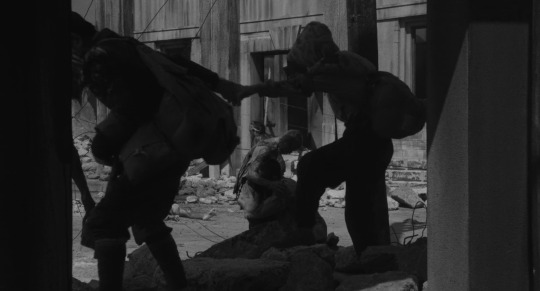



Black Rain | 黒い雨 (1989) dir. Imamura Shōhei
#movie stills#cinematography#film stills#japanese cinema#based on novel#masuji ibuse#black rain#kuroi ame#黒い雨#80s#shohei imamura#今村 昌平#井伏 鱒二#tanaka yoshiko#kitamura kazuo#drama#ww ii
11 notes
·
View notes
Text

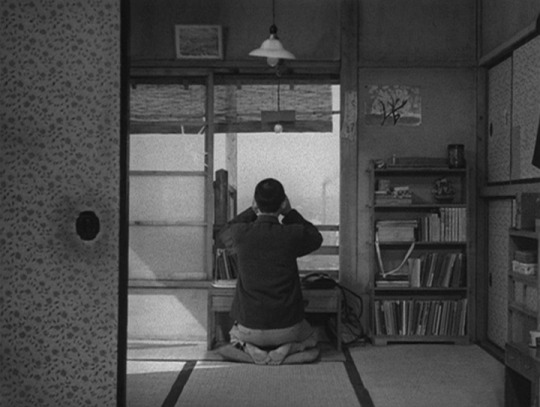
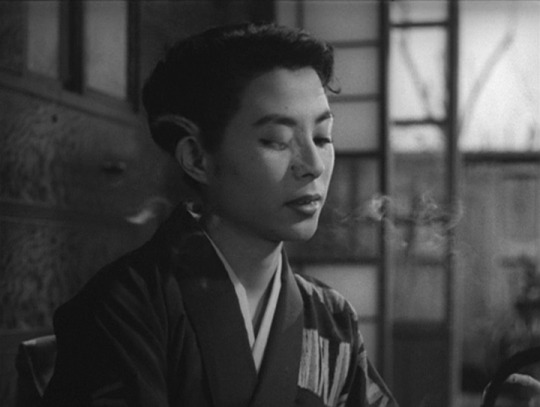
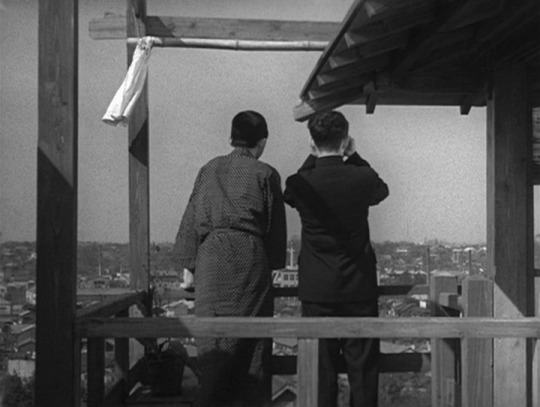

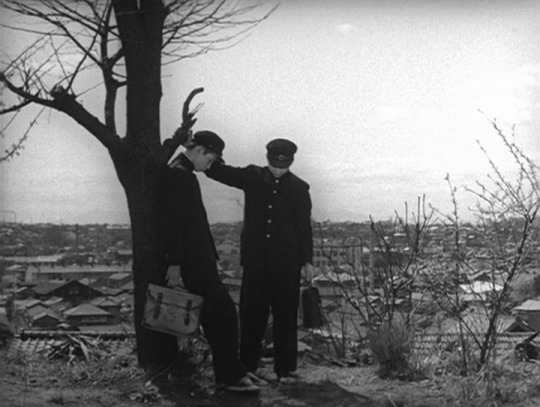
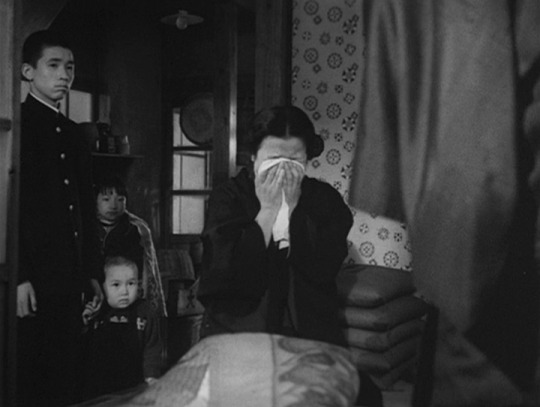
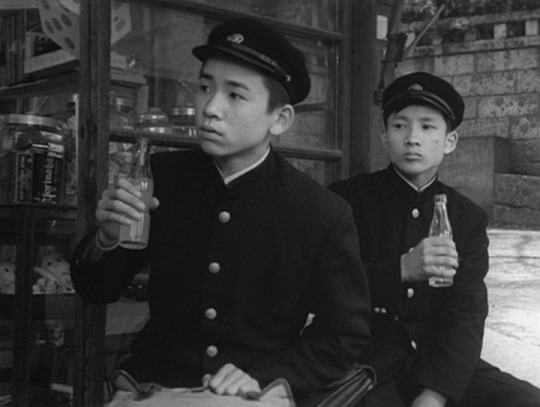
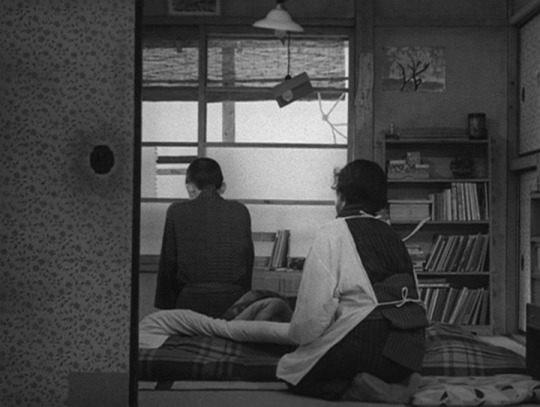

Farewell to Dream (Keisuke Kinoshita, 1956)
#films watched in 2024#Farewell to dream#Keisuke Kinoshita#Kinoshita#1956#japan#black and white#hands#Yuyake-gumo#Yuyake gumo#Yoshiko Kuga#Yûyake-gumo#Yûyake gumo#Shinji Tanaka#poverty#Eijirô Tono#drama#feet#shoes#back#nails
123 notes
·
View notes
Text
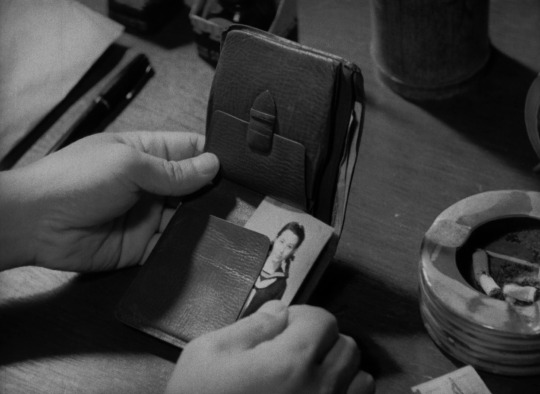

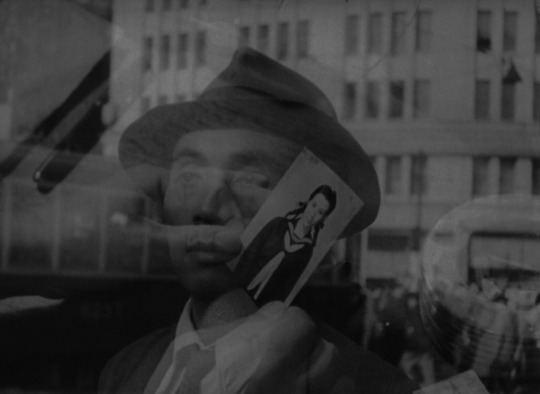
Kinuyo Tanaka
- Love Letter
1954
#Kinuyo Tanaka#Love Letter#Masayuki Mori#田中絹代#恋文#森雅之#japanese film#1954#久我美子#yoshiko kuga#photograph
61 notes
·
View notes
Text




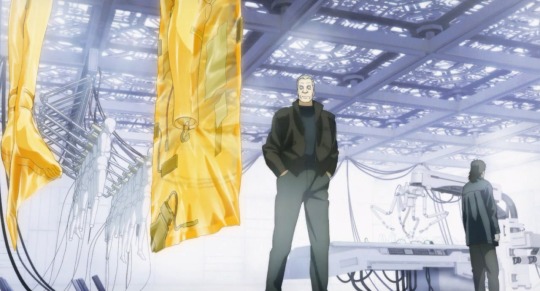


Ghost in the Shell 2: Innocence (2004)
Director - Mamoru Oshii, Cinematography - Miki Sakuma

"There's loyalty that protects secrets and loyalty that projects the truth. You cannot serve both masters, so which loyalty is yours?"





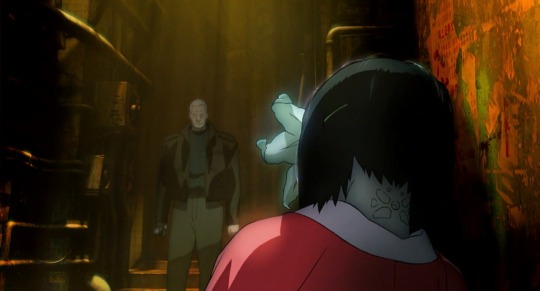


#scenesandscreens#ghost in the shell#Innocence#mamoru oshii#Miki Sakuma#Yutaka Nakano#Masaki Terasoma#naoto takenaka#yoshiko sakakibara#hiroaki hirata#Katsunosuke Hori#Kōichi Yamadera#Tamio Ōki#Akio Ōtsuka#Atsuko Tanaka
83 notes
·
View notes
Text
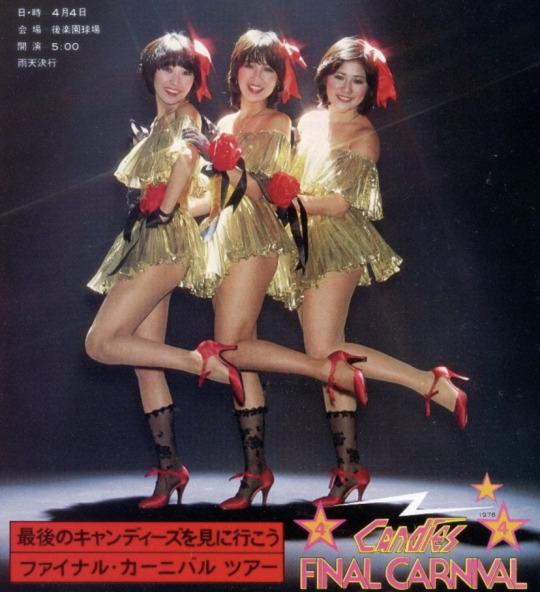
35 notes
·
View notes
Text
🍭 Candies 🍭
Japanese trio from the 70s.



#japan#japanese#1970s#Japanese musicians#j pop#J pop idols#Nostalgia#Yoshiko Tanaka#Miki Fujimara#Ran Ito#japanese girls#candies
3 notes
·
View notes
Text
youtube
Yoshiko Tanaka - Cabochard
0 notes
Photo

Noriko Kikuoki, Shinji Tanaka, and Yoshiko Kuga in Farewell to Dream (Keisuke Kinoshita, 1956)
Cast: Shinji Tanaka, Yuko Mochizuki, Yoshiko Kuga, Eijiro Tono, Noriko Kikuoki, Takahiro Tamura, Ryohei Ono. Screenplay: Yoshiko Kusuda. Cinematography: Hiroshi Kusuda. Art direction: Kazue Hirataka. Film editing: Yoshi Sugihara. Music: Chuji Kinoshita.
The English title, Farewell to Dream, seems to be grammatically or idiomatically off: We would expect Farewell to a Dream or ... Dreams instead. (The Japanese title is Yûyake-gumo, which Google Translate renders as "Sunset Cloud.") But then there's something a little off about this entire short film -- only 78 minutes long. Its young narrator, Yoichi (Shinji Tanaka), tells us his story about how circumstances made him bid farewell to his dreams, except that he doesn't seem to have had any substantial dream other than not following in his father's footsteps as a fishmonger, a job he hates because it makes him smell of fish, causing other boys to taunt him. We can't really blame him, but the film never suggests that Yoichi had a clear plan of escape from that life. He spends a good deal of his time looking out over the rooftops of Tokyo through his binoculars, sighting a pretty young woman whom he dreams of meeting. Eventually, he and his friend Seiji (Ryohei Ono) make their way across the city to where they think the young woman lives, only to arrive in her neighborhood as she's getting into an automobile with the man she's engaged to marry. Yoichi's story is also mixed with that of his sisters: The elder one, Toyoko (Yoshiko Kuga), is pretty and vain, and has a handsome boyfriend, Sudo (Takahiro Tamura). But when Sudo's family goes broke, she marries an older man -- and then carries on an affair with Sudo. When his father (Eijiro Tono) falls ill, Yoichi's parents allow a rich uncle to adopt his younger sister, Kazue (Noriko Kikuoki), in exchange for some financial support, and we see Yoichi bid a sad farewell to the girl. I think we're meant to sympathize with Yoichi in the collapse of his family, but the irony is that after his father dies, Yoichi turns out to be a very good fishmonger, building a thriving business from his own talent as a cook by developing a sideline as a caterer and seller of prepared meals. Like it or not, Yoichi has become what many families would see as a blessing: the son who successfully keeps the family business alive. The effect is that Yoichi's lament for his lost future feels like self-pity rather than legitimate dismay at unfulfilled potential.
0 notes
Text
So far, we have 54 unique entrants! Assuming they are all chuunis (They are not) that means 18 of them will have to be cut, unless that number gets up to 64 in which case I may make this a 64 (+ Anghel) chuuni bracket. So to help with bolstering submissions for those who may get cut (Like Grimnir :( ) Here's a list of chuunis with more than one submission.
9 - Shun Kaidou
4 - Fischl, Omoharu Nakanaka
3 - Owain, Abyssal Black Flame Dragon, Gundham Tanaka, Wilhelm von Clausewitz Halcyon HISUIMARU, Yoshiko Tsushima, Ako Udagawa
2 - Celestia Ludenberg, Don Quixote (Limbus Company), G'raha Tia, Iana Magnolia/Konoha Satou, Kazuhiro Nakamura, Kim Namwoon, Uto Nakaji
Feel free to submit a character featured above as long as you haven't submitted them already, it helps me seed this properly and you can give propaganda that may be featured on their character slide. (Or even a general description. Please, for some of these webtoon characters.)
More importantly, if there's a chuuni you like but haven't submitted who isn't on the above lists (Like Grimnir) send them in! They may not make the cut otherwise, or possibly have not even been submitted yet.

#not a poll#important info#Also. Almost every Shun submitter formatted his name differently. Only two people spelled it the same.#shoutout to the person who called in help to their friends to submit the Len'en boy. power of a friend group obsessed with Some Niche Guy
31 notes
·
View notes
Text
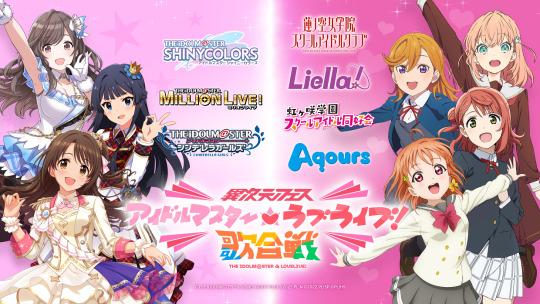
INTERDIMENSION FESTIVAL: IDOLM@STER★♥LOVE LIVE! UTA GASSEN
Information regarding the first IJIGEN FES 2023 live has been revealed! The live will occur in the TOKYO DOME on the 9th and 10th of December 2023. This first fes will feature three branches of IDOLM@STER performing with four branches of Love Live!
The voice providers participating in this stop are as follows:
DAY 1 ONLY
IDOLM@STER CINDERELLA GIRLS
Kotomi Aihara (Shiki Ichinose), Hiromi Igarashi (Anzu Futaba), Asami Takano (Frederica Miyamoto), Yuki Nakashima (Yuuki Otokura), Yuko Iida (Kanade Hayami), Honoka Inoue (Nanami Asari), Sumire Uesaka (Anastasia), Aya Suzaki (Minami Nitta), Miyu Tomita (Akira Sunazuka), Ru Thing (Syuko Shiomi), Teru Ikuta (Natalia), Hina Tachibana (Nagi Hisakawa), Nanami Yamashita (Yui Ohtsuki)
IDOLM@STER MILLION LIVE
Haruka Yamazaki (Mirai Kasuga), Azusa Tadokoro (Shizuka Mogami), Machico (Tsubasa Ibuki), Momo Asakura (Serika Hakozaki), Kotori Koiwai (Tomoka Tenkubashi), Atsuki Nakamura (Roco Handa), Emi Hirayama (Reika Kitakami), Yui Watanabe (Nao Yokoyama)
IDOLM@STER SHINY COLORS
Karin Isobe (Kogane Tsukioka), Chisa Suginuma (Mamimi Tanaka), Anna Yamaki (Sakuya Shirase), Shio Watanabe (Yuika Mitsumine), Yuina Mizuki (Kiriko Yukoku), Honoka Kuroki (Amana Osaki), Ryoko Maekawa (Tenka Osaki), Noriko Shibasaki (Chiyuki Kuwayama), Yuu Wakui (Toru Asakura), Rio Tsuchiya (Madoka Higuchi), Saran Tajima (Koito Fukumaru), Miho Okasaki (Hinana Ichikawa), Azusa Shizuki (Nichika Nanakusa), Aya Yamane (Mikoto Aketa)
DAY 2 ONLY
IDOLM@STER CINDERELLA GIRLS
Ayaka Ohashi (Uzuki Shimamura), Ayaka Fukuhara (Rin Shibuya), Sayuri Hara (Mio Honda), Amina Sato (Arisu Tachibana), Tomoyo Kurosawa (Miria Akagi), Hana Tamegai (Risa Matoba), Makoto Koichi (Haru Yuuki), Asaka Imai (Chie Sasaki), Natsumi Haruse (Kaoru Ryuzaki), Misaki Kuno (Nina Ichihara), Yuri Komori (Koharu Koga), Mina Nakazawa (Yukimi Sajo), Maki Hanatani (Kozue Yusa)
IDOLM@STER MILLION LIVE
Aimi (Julia), Miku Itou (Yuriko Nanao), Ibuki Kido (Kana Yabuki), Arisa Kori (Kaori Sakuramori), Yuri Komagata (Sayoko Takayama), Rie Suegara (Fuka Toyokawa), Saki Minami (Tsumugi Shiraishi), Rikako Yamaguchi (Rio Momose)
IDOLM@STER SHINY COLORS
Hitomi Sekine (Mano Sakuragi), Reina Kondo (Hiori Kazano), Mayu Mineda (Meguru Hachimiya), Hiyori Konno (Kaho Komiya), Haruka Shiraishi (Chiyoko Sonoda), Mariko Nagai (Juri Saijo), Wakana Maruoka (Rinze Morino), Akiho Suzumoto (Natsuha Arisugawa), Yuki Tanaka (Asahi Serizawa), Eri Yukimura (Fuyuko Mayuzumi), Sayaka Kitahara (Mei Izumi), Rina Kawaguchi (Luca Ikaruga), Haruna Mikawa (Hana Suzuki), Rena Ozawa (Haruki Iketa)
DAY 1&2
AQOURS (LOVE LIVE! SUNSHINE!!)
Anju Inami (Chika Takami), Rikako Aida (Riko Sakurauchi), Nanaka Suwa (Kana Matsuura), Arisa Komiya (Dia Kurosawa), Shukai Saito (You Watanabe), Aika Kobayashi (Yoshiko Tsushima), Kanako Takatsuki (Hanamaru Kunikida), Aina Suzuki (Mari Ohara), Ai Furihata (Ruby Kurosawa)
NIJIGASAKU SCHOOL IDOL CLUB
Aguri Ohnishi (Ayumu Uehara), Mayu Sagara (Kasumi Nakasu), Kaori Maede (Shizuku Osaka), Miyu Kubota (Karin Asaka), Natsumi Murakami (Ai Miyashia), Akari Kito (Kanata Konoe), Coco Hayashi (Setsuna Imura), Maria Sashide (Emma Verde), Chiemi Tanaka (Rina Tennoji), Moeka Koizumi (Shioriko Mifune), Shu Uchida (Mia Taylor), Akina Homoto (Zhong Lanzhu).
Support Member: Hinaki Yano (Yu Takasaki)
Liella! (LOVE LIVE! SUPERSTAR!!)
Sayuri Date (Kanon Shibuya), Liyuu (Keke Tang), Nako Misaki (Chisato Arashi), Naomi Payton (Sumire Heanna), Nagisa Aoyama (Ren Hazuki), Nozomi Suzuhara (Kinako Sakurakoji), Akana Yabushima (Mei Yoneme), Wakana Okuma (Shiki Wakana), Aya Emori (Natsumi Onitsuka), Yuina (Wien Margarete), Sakura Sakakura (Tomari Onitsuka)
HASUNOSORA SCHOOL IDOL CLUB
Nirei Nozomi (Kaho Hinoshita), Kokona Nonaka (Sayaka Murano), Nina Hanamiya (Kozue Otomune), Kotoka Sasaki (Tsuzuri Yugiri), Kanna Kan (Rurino Osawa), Kona Tsukine (Megumi Fujishima)
41 notes
·
View notes
Text
Frieren: Beyond Journey's End #1-4 - It was... Perfect




Episode 1 - The Journey's End
Screenplay: Tomohiro Suzuki
Storyboard: Keiichirou Saitou
Episode Director: Ayaka Tsuji
Animation Director: Reiko Nagasawa
Key Animators: Junko Abe, Shin Ogasawara, Ran Kamezawa, Jun Sekiguchi, Daiki Harashina, Kanata Yanagisawa, Shinichi Yoshikawa, Xujian Li, Odashi, Keisuke Kobayashi, Shinji Ootsuka, Hayato Kakita, Toshiyuki Satou, Ayaka Tsuji, Yoshiko Matsumura, Emi Yamazaki, Kanako Yoshida, Kerorira, Kou Yoshinari
Episode 2 - It Didn't Have to Be Magic...
Screenplay: Tomohiro Suzuki
Storyboard: Tomoya Kitagawa
Episode Director: Tomoya Kitagawa
Chief Animation Director: Reiko Nagasawa
Animation Director: Ayaka Minoshima
Key Animators: Junko Abe, Nobuhide Kariya, Toshiyuki Satou, Harumi Takagi, Daiki Tanaka, Masaho Hori, Yutaka Minowa, Kanata Yanagisawa, Xujian Li, Fuuko Abe, Kyousuke Ootori, Takahito Sakazume, Jura, Yuka Matsumura, Yukiko Watabe, Hayato Kakita, Hiroyuki Kobashi, Jun Sekiguchi, Airi Takahashi, Daiki Harashina, Ayaka Minoshima, Kouta Mori, Shinichi Yoshikawa, Aoi Ootani, Naoki Katou, Sanae Shitaya, Shinya Segawa, Zihan Liu
Episode 3 - Killing Magic
Screenplay: Tomohiro Suzuki
Storyboard: Daiki Harashina
Episode Director: Daiki Harashina
Chief Animation Director: Reiko Nagasawa
Animation Director: Daiki Harashina
Key Animators: Daiki Harashina, Junko Abe, Shin Ogasawara, Mai Toda, Kanata Yanagisawa, Daisuke Shibukawa, Kou Yoshinari, Fei Hung Donghua, Hanwen Ye, Tooru Iwazawa, Honami Takeuchi, Yoshiko Matsumura, Xujian Li, Yukiko Busa, Nonno
Episode 4 - The Land Where Souls Rest
Screenplay: Tomohiro Suzuki
Storyboard: Yoshiaki Kawajiri
Episode Director: Kento Matsui
Chief Animation Director: Reiko NagasawaAnimation Director: Ayaka Tsuji
Key Animators: Shin Ogasawara, Hiroyuki Kobashi, Toshiyuki Satou, Harumi Takagi, Rie Arakawa, Yuka Koiso, Masahiro Yufune, Pinqiao Hui, Norifumi Kugai, Ayaka Satou, Jun Sekiguchi, Miyuki Inoue, Shuuji Maruyama, Ryuuguu-san, Yenxin Fan
Last week was utter hell, with a new class, a new schedule, and my sleep going out of whack. I'm still trying to readjust, and let me explain why I'm mentioning all of this. Almost nothing would have motivated me to get out of my zone and type this post except for Frieren. Frieren is one of my favorite manga series. If you've talked to me about anime/manga before, you would know this. So, ever since it was announced, it has been one of my most anticipated series. To add to that, Keiichirou Saitou was announced as the director. He's a great example of an upcoming new-gen director who has excelled in everything he's been a part of. From the beautiful and abstract EDs he created for The Executioner and Her Way of Life or Boogiepop, to the mesmerizing, dreamlike episodes he directed for Sonny Boy, and the expressive, now very popular Bocchi the Rock. He was a perfect choice as a director for a series like this, and let me tell you, he delivered fully.
Just from a quick glance, you can see how the show looks. Everything is eye-catching, making it almost hard to focus on one particular element because they all just look so good, and no, it's not just the chromatic aberration causing the lack of focus. The various departments responsible for compositing, the background, and the overall color design have done an outstanding job, creating a beautiful and cohesive piece of art. Seeing someone you might consider a less experienced director pulling off such a complete and harmonious experience is incredible. In terms of design, the whole show is aesthetically pleasing. It's not the experimental work you saw in Sonny Boy; it's going in a totally different direction, like a beautiful painting that should be framed on a wall.
It works very well when paired with, you know, how Frieren is as a story. The fantasy world they are in isn't an extremely unique one. You've seen it before; it's fairly typical in that sense. But that's not truly the point. The main focus is showing the day-to-day or year-to-year life of this immortal elf girl, Frieren, and how she views time, how she remembers her past. It's not an incredibly grand adventure, but with the small lens we have on these characters, it feels like a cherished moment, something that should be captured in a photo or painting. It's beautiful in a very simple way. It's not a series made for extremely large moments, I think Frieren has always been focused on a simpler view of life, much like a painting. The smaller details of such a straightforward approach are highlighted so well. The trees in the environment, the squirrels just moving around—there's so much life in each scene. It really all comes together for me like a piece of art.
The consistency lasts through all four episodes, and the staff distribution also seems fairly good, so I expect this to continue throughout the two cours. The pacing itself is perfect. I've really enjoyed how the story has been adapted to animation so far. I believe that nowadays, many anime series have fallen into the pitfalls of adapting things too quickly to capture the interest of newer viewers early on. However, the series composition for Frieren here is excellent.
This writeup might have been shorter than most people were expecting considering how amazing the anime adaptation is and how much I love the source material, but what can really be said about except just praising? I feel like even if you don't like the source material, the anime's execution is almost undeniably good. Additionally, as I said this past week has not been kind to me so my energy is a bit drained, at first I was planning to be more specific in my write up and make points more adhering to the specifics of each episode, but I didn't really have time for that. However, I will do my best to cover every Frieren episode weekly from now on. Make no mistake this is going to be my favorite series from this year.


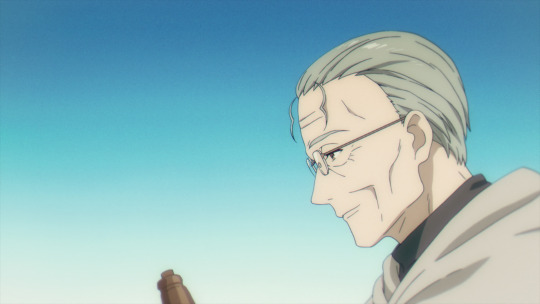
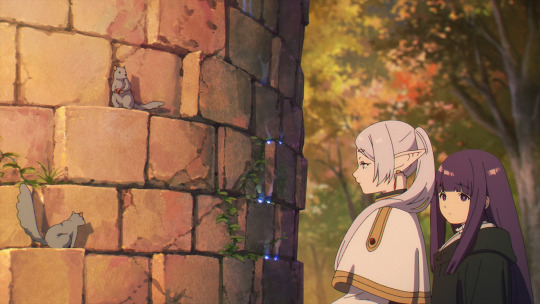


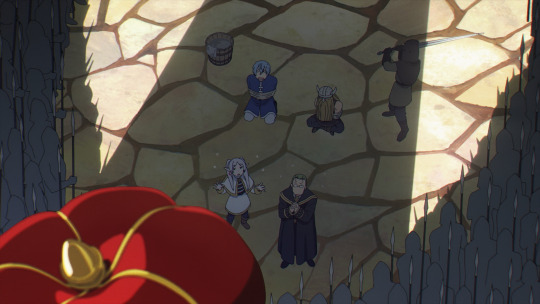








22 notes
·
View notes
Text
Some of my favourite seiyuu and the roles I particularly love them in:
Park Romi (朴璐美): Padparadscha (Houseki no Kuni), Teresa (Claymore), Kiryuuin Ragyou (Kill La Kill)
Mitsuishi Kotono (三石琴乃): Katsuragi Misato (Neon Genesis Evangelion), Tsukino Usagi (Sailor Moon), Mireille Bouquet (Noir), Jean (Claymore), Rahab (The Ancient Magus’s Bride), Birdy Cephon Altera (Tetsuwan Birdy OVAs)
Sakamoto Maaya (坂本真綾): Kanzaki Hitomi (Vision of Escaflowne), Chikujouin Magane (Re:CREATORS), Echidna (Re:Zero), Lal’c Melk Mark (Diebuster), Ryougi Shiki (Kara no Kyoukai), Alphard (Canaan)
Sugita Tomokazu (杉田智和): Kyon (Suzumiya Haruhi no Yuuutsu), Izol (Maquia)
Sakakibara Yoshiko (榊原良子): Kushana (Nausicaä of the Valley of the Wind), Nagumo Shinobu (Patlabor), Kayabuki Youko (Ghost in the Shell: Stand Alone Complex), Asahina Tomiko (Shinsekai Yori)
Sawashiro Miyuki (沢城みゆき): Canaan (Canaan), Mordred Pendrago (Fate/Apocrypha), Kanbaru Suruga (Bakemonogatari), Karanomori Shion (Psycho-Pass)
Kotobuki Minako (寿美菜子): Kotobuki Tsumugi (K-On!), Tanaka Asuka (Hibike! Euphonium), Amy Bartlett (Violet Evergarden Gaiden), Nanami Touko (Yagate Kimi ni Naru), Shunma Suruga (Re:CREATORS)
Tanaka Atsuko (田中敦子): Kusanagi Motoko (Ghost in the Shell), Medea (Fate/Stay Night)
Toyosaki Aki (豊崎愛生): Altair (Re:CREATORS), Hirasawa Yui (K-On!)
Yamadera Kouichi (山寺宏一): Kaji Ryouji (Neon Genesis Evangelion), Togusa (Ghost in the Shell)
Noto Mamiko (能登麻美子): Inkarmat (Golden Kamuy), Prospera Mercury (G-Witch, even though I haven’t finished it yet), Toudou Shimako (Maria-sama ga Miteru), Asōgi Rin (Rin: Daughters of Mnemosyne, even though I rather disliked this anime), Nakaizumi Youko (Rinne no Lagrange), Toudou Gin (A Place Further Than the Universe)
Ootsuka Akio (大塚明夫): Batou (Ghost in the Shell), Iskandar (Fate/Zero)
Furuya Tooru (古谷徹): Sakamoto Kousaku (Stop!! Hibari-kun!), Chiba Mamoru (Sailor Moon)
8 notes
·
View notes
Text

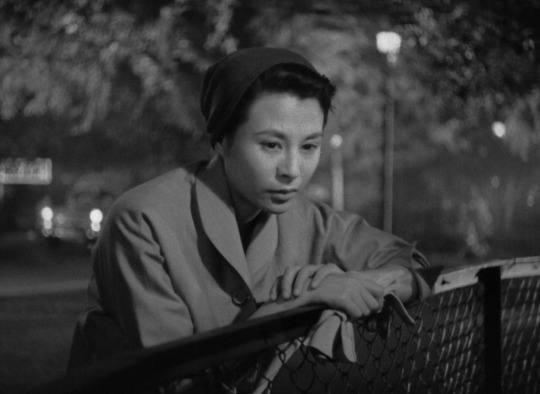
Kinuyo Tanaka
- Love Letter
1954
25 notes
·
View notes
Text
'70s Japan Trends Through the Music Charts (Part 3)
During the 1970s, the Japanese music industry was in the process of forming its identity. In addition to mirroring the musical preferences of the nation, the charts also served as a reflection of the prevailing societal trends and ambitions of that era. In this series, we chronicle the most significant musical trends of the decade.
'70s Japan Trends Through the Music Charts (Part 1)
'70s Japan Trend Through the Music Charts (Part 2)
Trend #7: Back to Being a Normal Girl
In the 1970s, disbandments were common in the J-music world, and idol groups did not live through a drop in popularity. The decade began with the end of the group sound boom, meaning the dissolution of all bands that followed the style, and it closed with Johnny's boyband Four Leaves and Finger 5 announcing their separation in 1978. Meanwhile, split announcements from folk bands and duos were standard even for those at their peak. The folk duo Grape broke up in 1973, Kaguya-Hime in 1975, and Arisu in 1981. But, for most men, disbandment didn't mean retirement, as individual members usually remained active in the entertainment world. Instead, women were the ones with the showy retirement announcements. More specifically, female idols.
In 1975, the idol duo The Peanuts, formed by twin sisters Emi and Yumi Ito, announced they'd leave the entertainment world. The siblings debuted in 1959 as the first idols of the almighty Watanabe Pro agency, succeeding as singers, actresses, and hosts of variety shows. By the mid-70s, they were past their peak. Still, their senior position at Watanabe Production meant an extravagant closing act that included tributes from other stars at their agency, a TV special, and a small "sayonara" tour. Five years later, Momoe Yamaguchi announced her marriage and departure from showbiz. But while history made Momoe's goodbye a milestone moment and The Peanuts' retirement created a precedent for female idols to follow, in real-time, the retirement that truly captivated Japan at the time was the one involving the trio known as Candies.
Candies, consisting of Ran, Miki, and Sue, three classmates from Tokyo Music Academy, debuted in 1972 under Watanabe Pro. Initially, their sales were lackluster. But, in 1975, Sue, the most skilled vocalist, was replaced as the lead by Ran, who had more appeal with the male audience, and their popularity grew, carried mainly by fanboys, especially university students. But with their catchy songs and good comedic timing, they became fixtures on the variety show circuit and on music charts and endeared themselves to the broader public.
In the summer of 1977, the girls shocked the audience by announcing their retirement during one of their Tokyo concerts. Ran's statement, "I want to go back to being a normal girl," became headline news and a cultural buzzword. The idea of these beautiful and charismatic young women yearning for an ordinary life fascinated Japan, and their popularity soared. Initially planning to retire in September, they postponed it for over six months to maximize their celebrated farewell. The public demand for them was so huge that the Korakuen Stadium was chosen for their final concert, turning Candies into the first female act to headline a show there. Their last performance was broadcast live on TV, achieving a record-breaking 32.8% rating.

Thanks to the buzz around their retirement announcement, Candies became the first female act to headline a stadium concert in Japan.
These retirements had a ripple effect. Seeing their senpai at Watanabe Pro, The Peanuts, saying goodbye influenced the Candies girls. The excellent reception around Candies' farewell reportedly gave Momoe Yamaguchi the courage to leave public life.
Still, Candies got bored of being ordinary girls pretty quickly. After a two-year break, Ran Ito and Yoshiko Tanaka (Sue) returned to the entertainment world as actresses. Miki made a brief comeback in 1983 but married soon after and left showbiz for good. They never reunited publically, keeping the mythology around the trio alive. Behind the scenes, however, they all remained close. Yoshiko passed away due to cancer in 2011, and both former group members were by her side in her final hours. Miki made her first public appearance in decades at Tanaka's wake. Alongside Ran, she made a brief speech, giving the Candies their second and definitive farewell moment 33 years after their legendary sayonara concert.
Trend #8: Pink Lady, The Ultimate 70s Icons
On the last day of March 1981, the idol duo Pink Lady took the stage of the biggest concert venue in Tokyo, the Korakuen Stadium, for their dissolution concert, a momentous event announced six months earlier. Expectations were for a sold-out, highly emotional farewell reminiscent of Candies' retirement show three years prior. Instead, ticket sales were poor and, aggravating the situation, the weather was terrible on the day, with a mix of snow and rain. Thus, the attendance fell way below expectations, with the TV staff broadcasting the event scrambling to get the right angles to avoid images of a half-empty stadium. It didn't seem like a fitting goodbye for the idol duo who, just a few years prior, were the most significant musical phenomenons Japan had ever witnessed. What had happened?
Mitsuko and Keiko were introduced to the general public six years earlier. Like many stars of the 1970s, they catapulted to stardom through the talent search NTV show "Star Tanjou!". On their first major TV appearance, the 18-year-old girls were an amalgamation of current trends: a folk-singing duo named Cookie with their name and aesthetic inspired by Candies. Record label Victor, along with the newly-established agency T&C Music, quickly scoped them up, completely reworked their image, and renamed them after a cocktail, "Pink Lady." Six months later, in August 1976, they officially debuted, presenting something hitherto unseen in the Japanese entertainment world: a disco-inspired duo with long legs, adorned in short, sequined attire and performing hip-shaking choreography.
That innovative style was the creation of several pairs of hands. Their flashy, sexy styling was the work of Yoko Noguchi. Yuu Aku was responsible for their lyrics, while Shunichi Tokura produced the songs. Famed choreographer Hajime Doi was in charge of their dance moves.
Initially, their pelvic movements were deemed a tad risqué for Japanese society, and the original plan was to introduce them as late-night T.V. sex symbols, following the path of stars like Linda Yamamoto. However, their debut single, "Pepper keibu" (Inspector Pepper), instantly captured the public's attention. Their second single, "S.O.S.," catapulted them to the top of the weekly charts for the first time. Their fourth single, "Nagisa no Sinbad," would surpass one million copies sold, becoming the best-selling single of 1977 and solidifying their status as the country's top stars. In fact, four of the ten biggest singles of the year belonged to the duo.
In 1978, their star shone even brighter. Pink Lady boasted three million-selling singles, monopolizing the top three spots on the annual singles chart. They became the first music act to achieve nine consecutive chart-topping songs. Their "Best Hit Album" became the year's number-one record, selling 700,000 copies and earning the title of the fastest-selling full-length album in Japanese history up to that point. In July, they made history by becoming the first act to sell out two consecutive shows at Korakuen Stadium. Their unprecedented success had never been seen before in the Japanese phonographic industry.
Their vibrant image and disco-pop sound foreshadowed global musical trends that would soon captivate Japan. For instance, in 1978, the major imported success was the movie "Saturday Night Fever" and its soundtrack. Abba had become the country's best-selling Western act by the following year.

Between 1977 and 1978, Pink Lady's popularity achieved heights never before seen by the Japanese mass culture industry.
But what boosted Pink Lady's historical popularity was their success with a particular segment: kids. The duo utterly transfixed this demographic with flashy clothes, catchy songs, and easy-to-copy choreographies. And children couldn't get enough of them, with their licensed products flooding the market. At their peak, they were simultaneously starring in over 26 TV spots, had more than 100 products bearing their name, had a radio program, and hosted 7 TV shows on various networks. They also starred in 3 movies. Between 1977 and 1978, Mii and Kei were ubiquitous presences, with a schedule so hectic that "as busy as Pink Lady" became a common expression. Years later, they'd confess they worked so much and had so many activities filling their days and nights that they had no time to grasp the actual dimension of their success.
By the end of 1978, their popularity had grown so immense that their management made a surprising decision: they declined an invitation to perform at the Kouhaku Uta Gassen, a prestigious year-end music show hosted by NHK and historically the highest-rated program of the year. For music stars, an invitation to the Kouhaku was the ultimate honor, and the girls had just appeared for the first time in the previous year. But they had become so prominent that their management believed they should host their year-end special on the private broadcaster NTV instead. Pink Lady would, by themselves, rival the whole glitterati of the music industry.
The network spared no expense for the extravagant variety show-like "Pink Lady ase to namida no oomisake 150 pun" (Pink Lady Sweat and Tears 150 Minutes New Year's Eve). It had a lot of publicity and A-list guests from various fields and achieved an 8.2% rating, an improvement over the previous year's NTV's year-end show (6.2%). Still, it ended way behind NHK's Kouhaku, which reached a 72.2% average audience rating.
Since Japan holds its hierarchies in high regard, the NTV special resulted in a barrage of negative publicity for Pink Lady. Their belief that they could rival the traditional Kouhaku, where all the music industry's A-listers congregated, made them a media target. After two years of record-breaking success, the backlash had begun. In March 1979, when they released their new single, "Zipang," it reached only the fourth position on the weekly charts, marking the end of their number-one streak. Their decline had commenced.
However, at that point, Pink Lady had already shattered every potential barrier in the Japanese industry. Next, they wanted to conquer the world. So, with their local popularity in decline, they boarded a plane to the US to officially start their American takeover. In January, the duo released their first English-language single, "Kiss in the Dark," which peaked at #37 on the Billboard charts. This achievement made them one of the only two Japanese acts to reach the American top 40, alongside Kyu Sakamoto's "Sukiyaki," which topped the charts in 1963. They subsequently released their self-titled English-language album, but it failed to make an impression. Still, they got a second chance to make it big when one of the major US networks, NBC, offered the duo their own variety show in 1980.
"Pink Lady," alternatively known as "Pink Lady & Jeff," featured the Japanese duo co-hosting alongside comedian Jeff Altman. The show's title initially sparked confusion as Altman believed he played an equally vital role and insisted on his inclusion in the title. Pink Lady's American manager objected and even threatened legal action, ultimately leading NBC to compromise. Consequently, the on-screen name became simply "Pink Lady." Notably, NBC executives mistakenly assumed that Mie and Kei were fluent in English, only discovering at the eleventh hour that the duo did not speak a word of the language. This necessitated phonetically memorizing both scripts and songs, creating a complex production process. The shooting schedule posed challenges as well, given their limited time for filming in California due to various promotional commitments in Japan. US producers sought to develop contrasting personas for each girl for marketing and narrative purposes. This concept, however, met with vehement opposition from Mie, Kei, and their Japanese handlers, as their signature unity in performance was a defining characteristic. To compound matters, the primetime celebrity-fronted variety show, once popular in the 1970s, was in decline. All things considered, the "Pink Lady" US show was a recipe for disaster. And it was, being canceled after five episodes.
In hindsight, Pink Lady's brief foray into the American market did achieve some remarkable milestones. The duo became the first and only Japanese stars to headline a primetime show, and they were among the few to secure a top 40 song in the country. However, during that period, their inability to replicate their domestic success and the unfavorable reception of their US show led the Japanese press to characterize their international endeavors as a monumental failure. Coupled with their waning popularity in Japan, Pink Lady's prospects seemed bleak.
Towering over all of this was Keiko's involvement with another top idol, Goro Noguchi. In 1979, the Japanese media frenzy surrounding their relationship reached a fever pitch. Since idols were expected to refrain from dating, both parties vehemently denied any romantic involvement, and despite numerous attempts, the media failed to produce photographic evidence of their romance. Nevertheless, their pairing became a national fixation. Tabloids reported that Pink Lady's faltering US career was due to Kei's fixation on Goro, suggesting that she longed to return to Japan and that marriage was on the horizon. According to this narrative, despite her agency's pleas, she would ultimately prioritize love over her career, as a female dol's romantic involvement could only mean one thing: retirement.
Keiko's marriage to Noguchi never materialized, and neither did her retirement. Instead, in September 1980, Mie and Kei convened a press conference at the Akasaka Prince Hotel to announce their disbandment within six months. The hope was that this dissolution announcement would lead to a resurgence in sales and popularity, akin to the "Candies' retirement effect." Yet, after years of overexposure, that ship had sailed. Their final single, "OH!," peaked at #46, an improvement over their previous release but far from their glory days. Their last concert drew an audience of 15,000—a respectable number but well below the stadium's maximum capacity, inviting unfavorable comparisons to the sold-out 1978 Candies "sayonara" show at the same venue.
Their agency, T&C Music, filed for bankruptcy nearly immediately after their disbandment. While many entertainment agencies in Japan had connections to the Yakuza, T&C stood out for its inadequacy in concealing its underworld ties, leading to many legal troubles. Furthermore, their financial management left much to be desired, and the consensus was that their investment in Pink Lady's US TV show left them in dire financial straits.

Despite the comparisons drawn between their farewell concerts and their simultaneous commercial peaks, there existed no genuine rivalry between Pink Lady (left) and the Candies girls right). Although Pink Lady's initial audition on Star Tanjou drew inspiration from the Candies' aesthetic, their post-debut image diverged significantly.
Hisahiko Iida, one of the executives associated with Pink Lady, used central Tokyo districts to illustrate these distinctions: "For Candies, Sony envisioned a group akin to the youth-centric wards of Shibuya and Harajuku. In contrast, for Pink Lady, we had in mind the adult nightlife ambiance of Shinjuku and Ikebukuro."
Despite their adult look, Pink Lady became a sensation with kids. Candies, on the other hand, were very popular with college boys.
The fact that each group occupied its own unique lane prevented them from ever feeling like competitors, and they frequently made joint appearances on TV.
As for the girls, they embarked on careers as TV actresses and solo singers. Kei started using her real name, Keiko Masuda, while Mie capitalized her nickname (MIE) and adopted it as her stage name. Some of the biggest names in Japanese music worked as songwriters for their first songs. MIE had the husband and wife team, BOOGIE WOOGIE BAND's Ryudo Uzaki and Yoko Aki, as the composers of her first two singles. Meanwhile, Masuda worked with celebrated songstresses Miyuki Nakajima, Yumi Matsutoya, and rock legend Keisuke Kuwata.
Keiko achieved a significant hit with her debut single, "Suzume," released two months after Pink Lady's dissolution, peaking at #9 on the Oricon weekly charts. Meanwhile, MIE experienced her defining success in 1984 with "NEVER," a Japanese rendition of the Australian band Moving Picture's song, which reached #4, boosted by the success of the TBS TV drama "Furyou shoujo to yobareru," which used the song as its theme.
Still, neither of the two would have lasting success as singers or actresses. What keeps them relevant today is Pink Lady's historical success, which, despite its anti-climax ending, made them symbols of late 70s culture.
Over the years, they have reunited on multiple occasions. In 1984, they released an album and held reunion concerts. In 1989 and 1990, they reunited for the NHK Kouhaku, marking their comeback to the traditional year-end gala after the highly publicized rivalry with the show a decade earlier. They released a compilation to celebrate their 20th anniversary in 1996 and took part in the end-of-year dinner show circuit in 1990 and 1996.
The early 2000s witnessed a peak in Pink Lady nostalgia. Their reunion for the 2000 Kouhaku became one of the show's highest-rated moments. In 2001, the TV Asahi variety show "Tantei! Night Scoop" noted how almost every Japanese woman in their 30s knew Pink Lady's choreographies. The following year, a Pink Lady-themed pachinko (a pinball gambling arcade game) machine generated substantial revenue, providing Mie and Keiko with significant royalties. This financial catalyst led to another nationwide reunion tour in 2003, with additional concerts in 2004 and 2005. Finally, in 2010, they announced their permanent reunion as Pink Lady. Since then, they've been making periodic appearances together.
Their current career relies on nostalgia and their past glory. But it underscores that while nostalgia for the 70s exists, there will be demand for Pink Lady.
Trend #9: Nursery Rhymes and the Taiyaki-kun Obsession
In 70s Japan, kids were a critical force behind some of the biggest recording industry success stories, such as Mari Amachi and Pink Lady. But what happened in 1976 defied all odds as a nursery rhyme no one had big expectations for would go on to become the best-selling single in Japan's history, a record that remains unbroken to this day.
The genesis of this extraordinary success can be traced back to Fuji TV's preschool program, "Hirake! Ponkikki," which introduced the song "Oyoge! Taiyaki-kun" (Swim, Taiyaki-kun) in September 1976. Taiyaki A taiyaki is a fried fish-shaped cake, a famous Japanese confectionary traditionally sold as street food.
The song recounted the adventures of Taiyaki-kun, a taiyaki who yearned to escape the daily ordeal of being fried on an iron plate, eventually embarking on an unforgettable journey to the sea. Ultimately, he can't escape his destiny as a fisherman catches and eats him.
Initially, expectations for the song were minimal. A few months prior, the record label Pony Canyon had released another nursery rhyme from the same show, yielding unremarkable sales. However, the mere announcement of "Oyoge! Taiyaki-kun's" release triggered an astonishing surge in pre-orders. The overwhelming demand prompted the label to bring forward the release from January 1976 to December. Upon its debut, "Oyoge! Taiyaki-kun" achieved a historic milestone as the first single to enter the Oricon weekly charts at the number one spot, where it remained for an astonishing 11 consecutive weeks. By the end of its chart run, this unassuming nursery rhyme had sold an unprecedented 4.5 million copies.
Pony Canyon's factory couldn't produce enough records to satisfy the demand, so the label had to mobilize its competitors and pay to use their plants. Because printing plants were overbooked, minor projects had their launch dates postponed. Among those affected was Japanese music legend Ryuchi Sakamoto. At the time, Sakamoto was an unknown, fresh out of the most prestigious music school in Tokyo, and his album only had a 500 copies initial pressing.
Other issues surfaced behind the scenes. A dispute emerged with the tax office in Tokyo's Shinagawa district, which claimed that Pony Canyon owed taxes. The label, however, cited a law exempting nursery rhymes from taxation, and ultimately, the National Audit Bureau ruled in favor of the company.
As the song's monumental success had been unforeseen, Shimon Masato, the voice behind "Oyoge Taiyaki-kun!," initially requested his customary fixed fee as a freelance vocalist—50,000 yen, equivalent to approximately 500 dollars. Subsequently, Pony Canyon awarded him a one-million-yen bonus, roughly 10,000 dollars. However, the fact that he did not negotiate for royalties resulted in him missing out on substantial earnings.
Similarly, Nagira Kenichi, responsible for the B-side song "Ippon demo ninjin" on the record, did not seek royalties. The company regarded his composition as inconsequential to the single's success, resulting in his receiving only his initial fee of 30,000 yen, around 300 dollars.
Nonetheless, "Oyoge! Taiyaki-kun" generated substantial profits for numerous parties involved, from the composer to the record label. The single financed the construction of a new building for Pony Canyon in Shinjuku, colloquially known as the "Taiyaki building." It also led to the creation of a best-selling picture book and a PVC doll, both of which became among the year's most sought-after products. The sales of taiyaki, the confection featured in the song, experienced a remarkable surge. Furthermore, it proved to be a boom for the entire nursery rhyme genre, triggering the success of other hits such as "Patapata Mama," another song from the "Hirake! Ponikki" show, and "Yamaguchi-san Chi no Tsutomu-kun," featured on NHK's "Minna no Uta."
For "Oyoge! Taiyaki-kun" to sell 4.5 million copies, it had to captivate audiences across all demographics, including teenagers and adults. Many have speculated about the reasons behind this particular nursery rhyme's extraordinary popularity. Was it due to its fortuitous timing, coinciding with a major railway strike that left working parents at home exposed to the catchy tune? Or did Japanese salarymen empathize with Taiyaki-kun's yearning to escape a monotonous existence?
There is yet to be a specific answer as to why the country fell in love with Taiyaki-kun. But the melancholic story of the fish-shaped taiyaki who tasted freedom before succumbing to its tragic destiny resonated deeply with Japanese society, becoming the biggest single in the country's history.
’70s Japan Trend Through the Music Charts (Part 4)
2 notes
·
View notes
Text
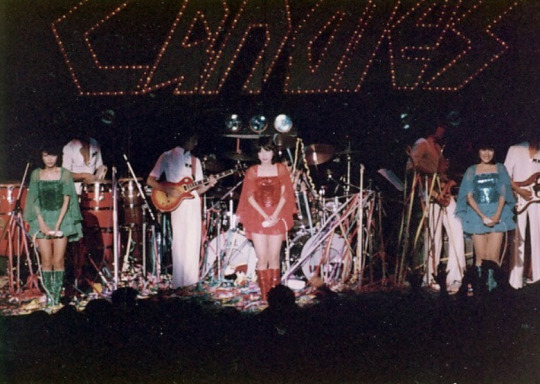
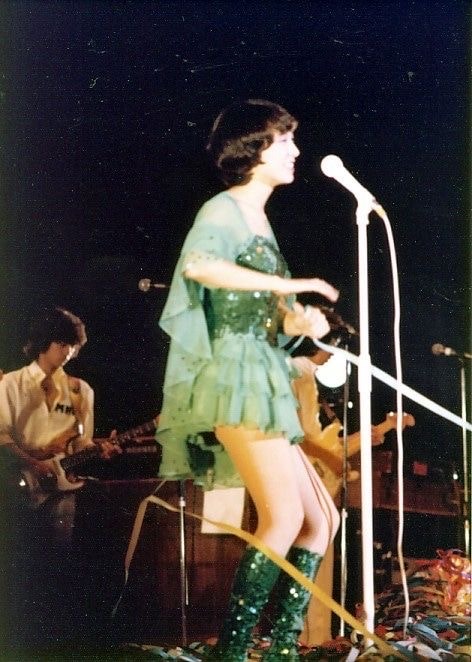
Candies performing live, 1977.
30 notes
·
View notes
